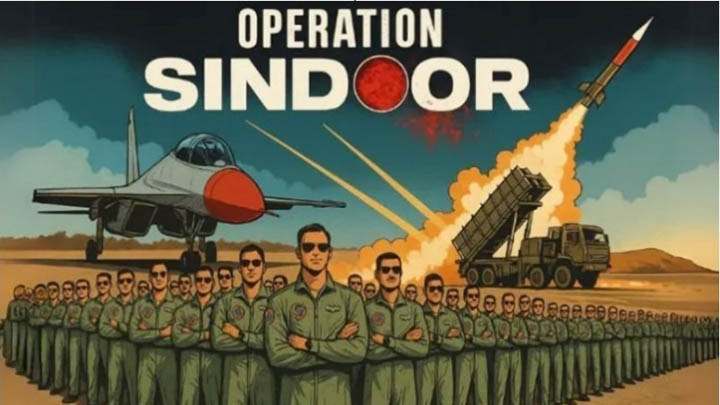Shabir Ahmad
The Indian Army’s evolving role in Jammu & Kashmir (J&K), especially in the aftermath of Operation Sindoor, reflects a dynamic model of engagement—resolute in combat, compassionate in outreach, and forward-looking in peacebuilding. Its sustained efforts to transform conflict-affected areas into environments of hope stand as a testament to its adaptable strategy and people-first approach. Within the broader national narrative, the Army’s presence in J&K highlights an essential truth: security, peace, and development are not separate goals but interconnected objectives that demand both strength and sensitivity. In J&K, the Indian Army has traditionally held a multifaceted role—not only as a combat force but also as a stabilizer, peace enforcer, and humanitarian partner.
Following Operation Sindoor, the Army’s engagement in the region has deepened, reaffirming its dedication to national unity, regional stability, and public welfare. While public attention often centers on counter-terror operations, it’s equally vital to acknowledge the Army’s developmental initiatives that have reshaped the socio-political landscape of the region.
Operation Sindoor was a crucial military mission aimed at dismantling a high-risk terror network operating across Pakistan. Marked by precision, coordination, and the integration of advanced intelligence and surveillance capabilities, the operation demonstrated the Army’s refined prowess in asymmetric warfare.
Though the operation spanned just days, its strategic and civil impact continues to resonate in J&K, country and international level. In the post-Sindoor period, the Indian Army solidified its operational superiority with a more layered and proactive counter-insurgency approach.
The deployment of drone surveillance, night-vision gear, and satellite imaging significantly enhanced monitoring of infiltration routes and high-altitude zones that were previously vulnerable. Greater autonomy at the battalion level allowed commanders to react swiftly to emerging threats, increasing operational efficiency. Simultaneously, improved relations with local communities yielded better intelligence and cooperation.
The resulting security atmosphere created a safer environment for movement, trade, and daily life—especially in districts once known for volatility.
Beyond its combat role, the Indian Army has increasingly positioned itself as a key player in J&K’s development, particularly in underserved and remote areas.
The Army’s educational initiatives have made a significant difference. Its Army Goodwill Schools have provided modern education to thousands of children across the Valley. Since Operation Sindoor, additional learning centers and libraries have been set up in long-neglected villages.
Skill development programs have also expanded, with vocational training centers for women and youth in Baramulla, Kupwara, and Anantnag promoting self-reliance and social upliftment. Career guidance and coaching for competitive exams underline the Army’s commitment to long-term integration and empowerment.
A cornerstone of the Army’s humanitarian outreach has been Operation Sadbhavana, aimed at fostering community engagement and development. Post-Sindoor, this initiative saw significant scaling up these include mobile health units, medical camps, and veterinary services reached far-flung villages lacking basic healthcare.
Distribution of essentials such as food, blankets, and school supplies—particularly during harsh winters and COVID-19 lockdowns—provided vital relief. The Army also engaged religious and community leaders to promote dialogue, peace, and mutual respect.
This holistic civil-military approach has nurtured trust and effectively countered extremist propaganda. In J&K where daily life has often been disrupted by Pakistan sponsored terrorism, the Army’s visible and consistent presence offers reassurance. More parents are now sending their children to school. Local businesses have resumed operations with confidence. Tourism has revived in destinations like Gulmarg and Sonamarg, largely due to the secure environment established by the Army.
Crucially, the Army has made deliberate efforts to project a more humanized image—not just as a force of the state, but as protectors and facilitators of peace.
Natural disasters are a recurring challenge in J&K, including avalanches, earthquakes, and floods. Time and again, the Indian Army has acted as a first responder, often putting its personnel at risk to save civilian lives.
Such consistent and responsive action reinforces the Army’s role not just as a defense force, but as a trusted and life-saving institution.



